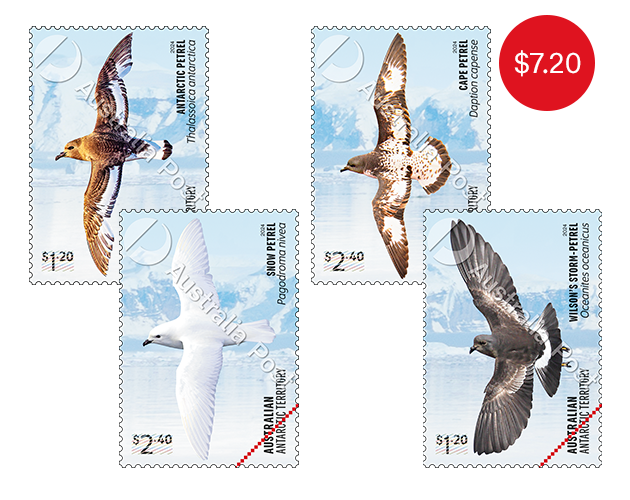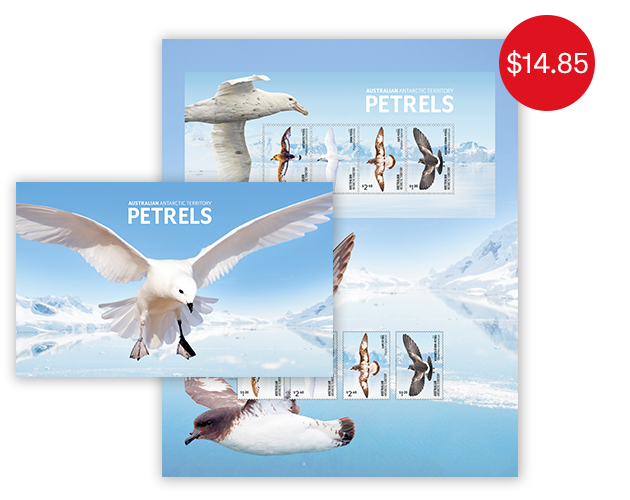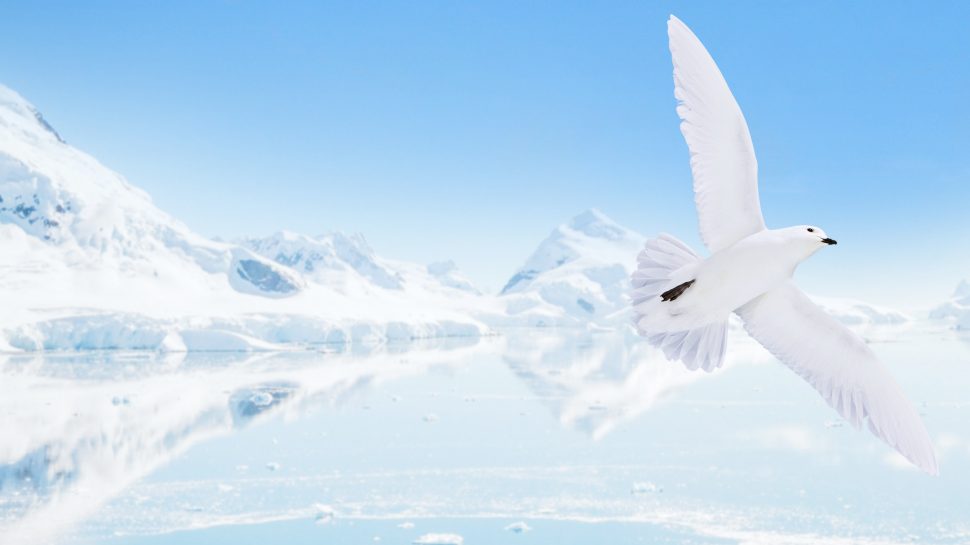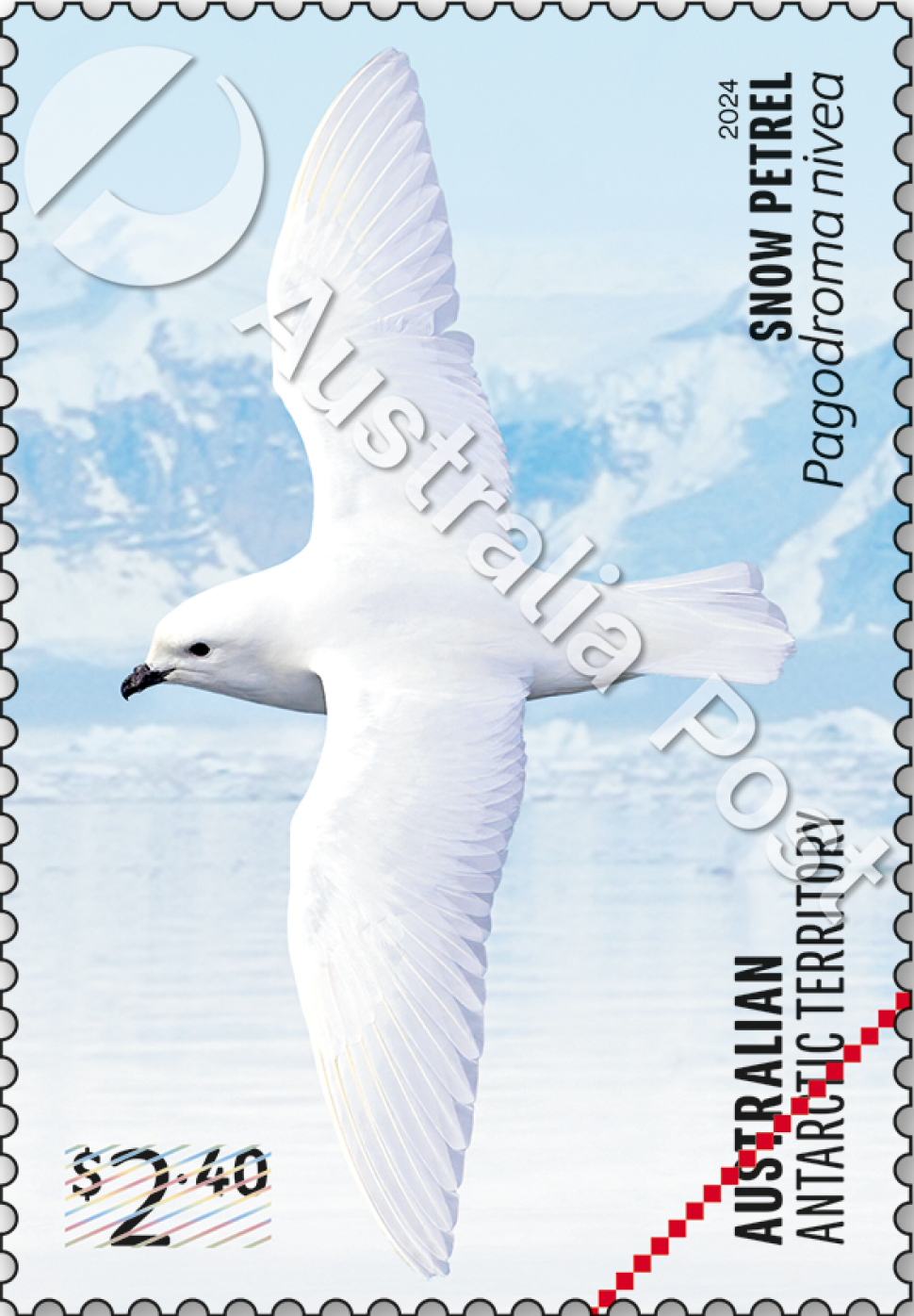Overview
Between one and two per cent of the Antarctic continent is ice free for some or all of the year. While most of these areas are coastal and typically used by penguins for breeding, there are many mountain peaks, known as nunataks, that emerge from the ice and glaciers to provide inland nesting sites for Antarctica’s flying birds – the petrels. Ranging in size from the smallest, the Wilson’s Storm-Petrel, to the largest, the Southern Giant-Petrel, these oceanic birds lay their single eggs in shallow depressions on the ground, and they manage to raise their young during the brief Antarctic summer. At the end of the breeding season, the adults and young head north, for some species as far as southern Australia, where they spend the winter months before heading south for the next breeding season.
Petrels are a diverse global seabird group, breeding, feeding and dispersing over the world’s oceans from the tropics to the Antarctic continent and to the Arctic. They are related to albatrosses, and many petrel species have a well-developed sense of smell and use smells as part of their foraging strategy to locate their food over the trackless Southern Ocean. Foraging birds can follow scent trails from krill swarms for tens to hundreds of kilometres. Many are long-lived, with banding studies showing many live for more than 30 years, and Southern Giant-Petrels approach 40 years of age.
Technical specifications
- Issue date
- 20 February 2024
- Issue withdrawal date
- 1 September 2024
- Denomination
- $1.20 x 2, $2.40 x 2
- Stamp & product design
- Sharon Rodziewicz, Australia Post Design Studio
- Paper: gummed
- Tullis Russell 104gsm Red Phosphor/Blue PVA
- Printer
- RA Printing
- Printing process
- Offset lithography
- Stamp size (mm)
- 26mm x 37.5mm
- Minisheet/sheetlet size (mm)
- 135mm x 80mm
- Perforations
- 14.6 x 13.86
- Sheet layout
- Module of 50 (2 x 25 no design)
- FDI Postmark
- Kingston TAS 7050
- FDI withdrawal date
- 20 March 2024
$1.20 Antarctic Petrel, Thalassoica antarctica
The Antarctic Petrel has striking dark-brown and white plumage, a wingspan of 1.1 metres and can weigh up to 750 grams. This species is commonly seen in the Ross and Weddell Seas, but there are large colonies in the Australian Antarctic Territory (AAT), on near-shore islands and ice-free coastal areas. The largest known colony in the AAT is at Scullin Monolith, east of Mawson station, where approximately 160,000 pairs nest. Numerous inland nunataks are used for nesting. Large flocks are often reported roosting (resting) on tabular icebergs, with multiple reports of more than 100,000 observed in a single flock.
$1.20 Wilson’s Storm-Petrel, Oceanites oceanicus
With a wingspan to 42 centimetres and weighing less than 50 grams, the Wilson’s Storm-petrel is the smallest of all the birds breeding on the Antarctic continent. They nest in tiny crevices under rocks in scree slopes and boulder fields in coastal areas of the AAT, and they will burrow where they can into soil on the subantarctic islands.
Despite their size, these petrels are remarkable long-distance migrants, with individuals recorded throughout the Indian Ocean, reaching as far north as Saudi Arabia, and France and Canada in the North Atlantic Ocean, and as far north as Hawai’i in the Pacific Ocean. They are regularly seen around Australia during the winter months.
$2.40 Cape Petrel, Daption capense
The Cape Petrel has an unmistakable plumage – it’s often described as akin to a “flying chequerboard” due to the extensive black and white patterning of their plumage. Their wingspan is approximately 90 centimetres and they typically weigh up to 500 grams. Cape Petrels were named after the Cape of Good Hope, in South Africa, where the first scientific specimen was collected. They nest on ledges and in rock crevices, and there are numerous colonies throughout the AAT, on near-shore islands and ice-free coastal areas. They also breed on the subantarctic islands, then disperse north for the winter months, with many spending the winter months around south-east Australia.
$2.40 Snow Petrel, Pagodroma nivea
The Snow Petrel is an all-white bird, with black eyes, bill and feet. It has a wingspan to 95 centimetres, weighs up to 500 grams and is a very agile flier. These petrels nest under boulders and in rock crevices, and there are numerous colonies throughout the AAT on near-shore islands and ice-free coastal margins. Some nesting sites are known at inland nunataks, several hundred kilometres from the coast. The adults return to their nests late in the evening to avoid potential attacks from skuas – predatory seabirds related to gulls. Snow Petrels are closely associated with the Antarctic sea ice; even in the Antarctic winter, Snow Petrels are rarely seen more than a day’s flight from pack ice and are often the first indication for vessels and visitors that they are approaching the Antarctic pack ice that surrounds the continent.
Shop our stamp collectables
Set of Gummed Stamps:
Set of Australian Antarctic Territory: Petrels Gummed Stamps
This set of stamps contains the four stamps from the Australian Antarctic Territory: Petrels stamp issue.

Gummed First Day Cover:
Australian Antarctic Territory: Petrels First Day Cover
This First Day Cover is from the Australian Antarctic Territory: Petrels stamp issue and presents the four stamps with postmark.

Stamp pack:
Australian Antarctic Territory: Petrels Stamp Pack
This Australian Antarctic Territory: Petrels stamp pack contains the four stamps and minisheet from the stamp issue presented in a high-quality folder.

Minisheet:
Australian Antarctic Territory: Petrels Minisheet
This gummed minisheet is from the Australian Antarctic Territory: Petrels stamp issue.

- Set of Gummed Stamps
- Gummed First Day Cover
- Stamp pack
- Minisheet
Additional collectables:
This content was produced at the time of the stamp issue release date and will not be updated.







